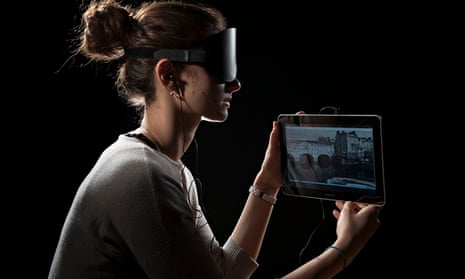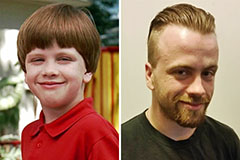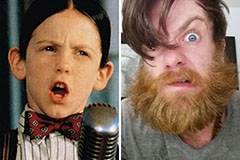Discover Ingenious Devices Made for the Aesthetically Damaged
The growth of cutting-edge devices for the visually damaged stands for a significant development in access and self-reliance. Technologies such as smart glasses with AI capacities and mobile applications developed to give auditory summaries are reshaping day-to-day experiences for users.
Smart Glasses for Navigating

Smart glasses made for navigating are changing the means aesthetically impaired individuals communicate with their environment. These advanced tools make use of a combination of camera modern technology, expert system, and auditory feedback to supply real-time info about environments. By utilizing obstacle discovery systems, wise glasses can alert customers to prospective hazards, making it possible for much safer movement in both acquainted and unknown setups.
The integration of GPS modern technology even more enhances navigating abilities, allowing individuals to receive acoustic directions as they relocate. This hands-free method not only cultivates self-reliance however also empowers aesthetically damaged individuals to navigate city landscapes with boosted self-confidence. In addition, several clever glasses are geared up with features that identify landmarks and street indicators, offering contextual information that improves the individual experience.
Moreover, the advancement of these gadgets is constantly progressing, with firms functioning to enhance the accuracy of item acknowledgment and expand the variety of navigational attributes. As smart glasses end up being extra available and budget-friendly, they hold the possible to significantly transform every day life for aesthetically damaged customers. Ultimately, these innovative tools represent an important action towards inclusivity, offering enhanced movement and a higher feeling of freedom for individuals navigating the globe around them.

Mobile Application for Daily Living
Exactly how can mobile applications enhance the every day lives of visually damaged individuals? Mobile applications are reinventing the method visually damaged users browse their environments, take care of everyday jobs, and access details. These applications supply essential assistance via different functionalities, fostering freedom and improving lifestyle.
Numerous innovative mobile apps are created especially for daily living. Apps like Be My Eyes connect visually damaged individuals with sighted volunteers using video calls, permitting them to obtain real-time aid with jobs such as reviewing labels or browsing strange areas. Seeing AI, established by Microsoft, utilizes synthetic intelligence to define environments, reviewed message, and determine items, efficiently transforming a smartphone into a powerful tool for daily aid.
In addition, navigating apps tailored for the visually impaired, such as Aira and BlindSquare, offer audio-based instructions and ecological info, allowing users to traverse their environments securely and with confidence. Past navigation and immediate assistance, mobile apps also sustain company and job monitoring, with functions that assist individuals establish tips, produce to-do checklists, and track visits. In recap, mobile applications work as essential resources, empowering visually impaired individuals to lead more independent and satisfying lives.
Wearable Technologies for Support
Empowerment with innovation is increasingly evident in the world of wearable gadgets designed to help visually impaired individuals. These innovative tools incorporate flawlessly right into day-to-day live, boosting navigating and providing crucial feedback to users. For example, wise glasses equipped with cameras can identify faces and check out text aloud, permitting users to engage more confidently in social and expert setups.
An additional notable development is using haptic responses systems in wearable tools. These systems utilize vibrations or other responsive signals to share details concerning the user's environment, such as challenges or adjustments in surface, improving movement and security. Wearable modern technologies also include wristbands that connect to smart devices, alerting users to notices via subtle vibrations, therefore enhancing connectivity without dependence on aesthetic cues.
As these innovations remain to progress, they are not just boosting self-reliance for visually impaired individuals however likewise cultivating a greater feeling of incorporation in culture. By linking the gap in between view it now obstacles encountered in day-to-day living and the possibility for freedom, wearable modern technologies function as pivotal tools in the quest for equality and empowerment for those with visual impairments.
Audio Description Tools
Sound description devices play a vital function in improving availability for aesthetically impaired individuals, supplying them with the ability to engage with visual media. AI-powered visual aids. These devices offer narrated summaries of key visual components in movies, tv programs, and live efficiencies, making certain that individuals can completely comprehend the context and emotions shared via visuals
Audio summary can be integrated right into different systems, including streaming services, movie theater screenings, and live cinema. Numerous preferred streaming services currently include audio description as an ease of access attribute, allowing customers to select it quickly. Along with traditional media, specialized applications also exist, giving audio descriptions for art exhibits, galleries, and other social occasions.
The efficiency of audio summary depends upon the skill of the storytellers, that must share visual information succinctly without diminishing the initial audio. Technologies in this field you can find out more are likewise leading the way for even more individualized experiences, where customers can adjust the level of information and pacing according to their choices.
Braille Innovations and Gadgets
Braille tools and developments have actually dramatically transformed the way aesthetically damaged people interact with text and info. Modern innovations have led to the advancement of flexible devices that boost literacy and independence among individuals.
In addition, portable Braille notetakers combine conventional Braille input with modern-day functionalities, helping with note-taking, organizing, and record editing on the go. Mobility aids for visually impaired users. These compact devices frequently feature text-to-speech capacities, linking the void in between Braille and acoustic info
On top of that, cutting-edge Braille printers have arised, permitting individuals to create Braille labels, documents, and educational products successfully. This access cultivates higher involvement in specialist and instructional atmospheres, eventually promoting inclusivity.
In addition, study right into wise Braille technologies proceeds to increase. Tools that integrate expert system are being checked out to offer real-time navigation aid and contextual details, improving the user experience in varied settings. On the whole, these advancements show a commitment to encouraging aesthetically impaired individuals via modern technology, guaranteeing they can quickly access and involve with the world around them.

Conclusion
The innovation of ingenious devices for the visually damaged substantially boosts self-reliance and lifestyle. Smart glasses, mobile applications, wearable innovations, audio description devices, and Braille innovations collectively empower people by giving crucial navigating help, environmental awareness, and improved analysis experiences. These innovations not only foster higher inclusion but additionally advertise autonomy in day-to-day tasks, eventually adding to an extra fair and easily accessible society for aesthetically damaged individuals. Proceeded article source advancement in this area holds pledge for additional improvements.
As wise glasses become more economical and accessible, they hold the possible to dramatically transform day-to-day life for visually impaired individuals. Mobile apps are revolutionizing the means aesthetically impaired users browse their settings, take care of everyday jobs, and gain access to information. Applications like Be My Eyes connect aesthetically impaired users with sighted volunteers via video telephone calls, permitting them to receive real-time assistance with jobs such as reading tags or navigating strange areas.Additionally, navigation applications tailored for the aesthetically damaged, such as Aira and BlindSquare, offer audio-based directions and environmental info, enabling users to traverse their surroundings securely and with confidence.The advancement of ingenious devices for the aesthetically damaged considerably boosts independence and high quality of life.
 Hallie Eisenberg Then & Now!
Hallie Eisenberg Then & Now! Michael Oliver Then & Now!
Michael Oliver Then & Now! Bug Hall Then & Now!
Bug Hall Then & Now! Michael Fishman Then & Now!
Michael Fishman Then & Now! Dolly Parton Then & Now!
Dolly Parton Then & Now!